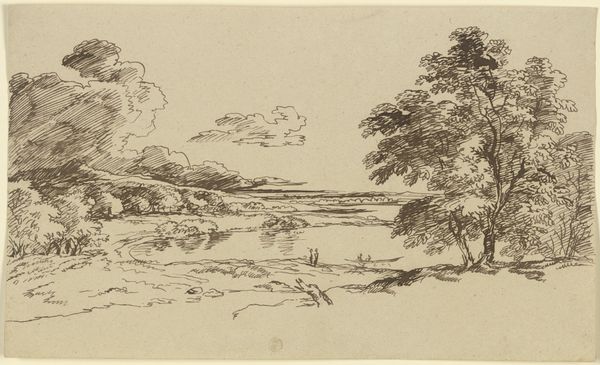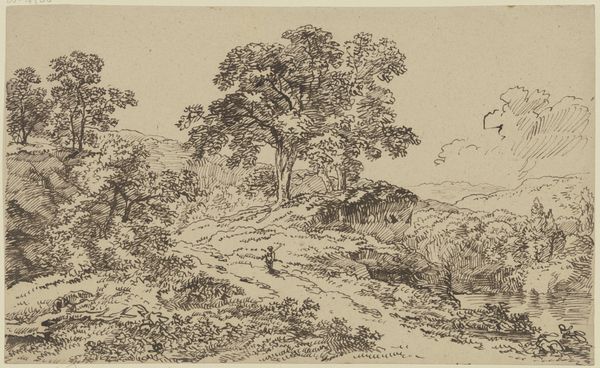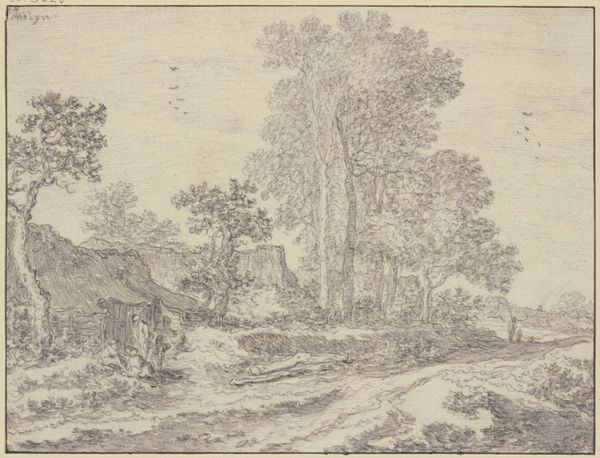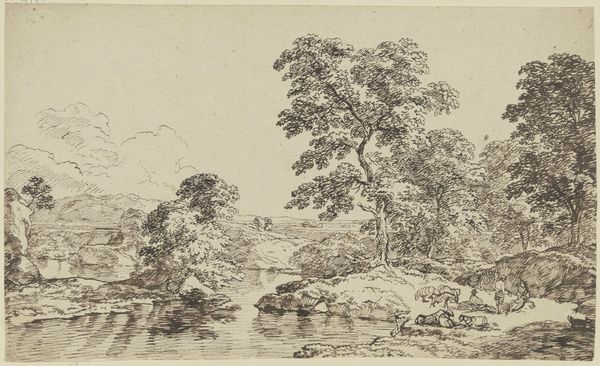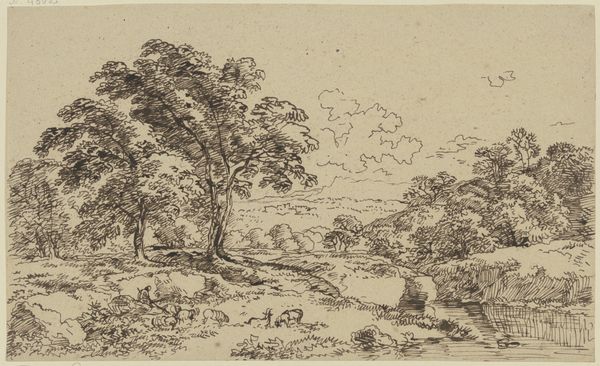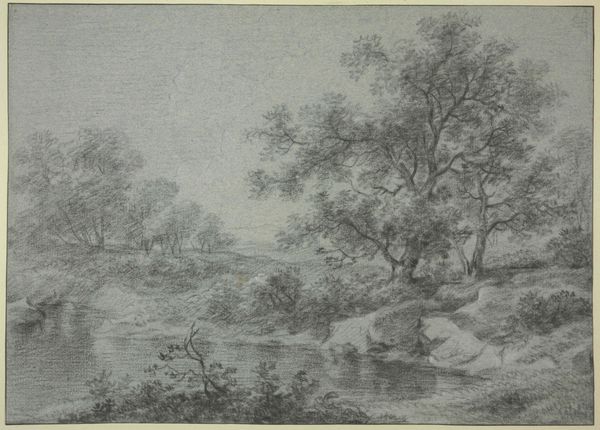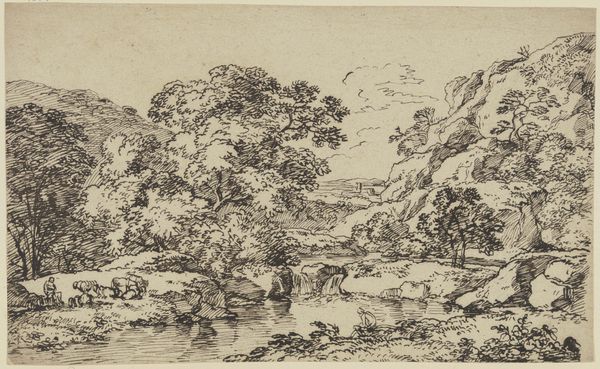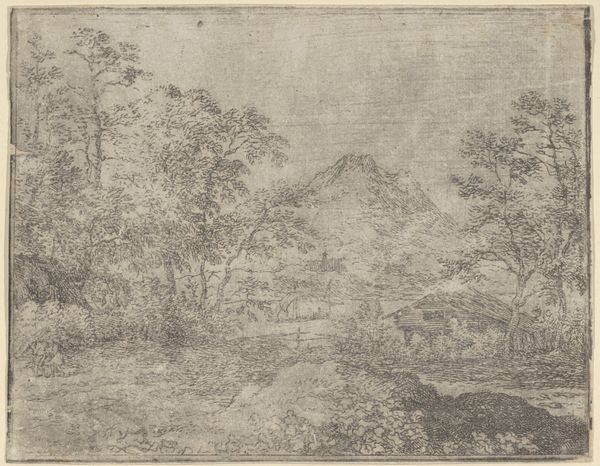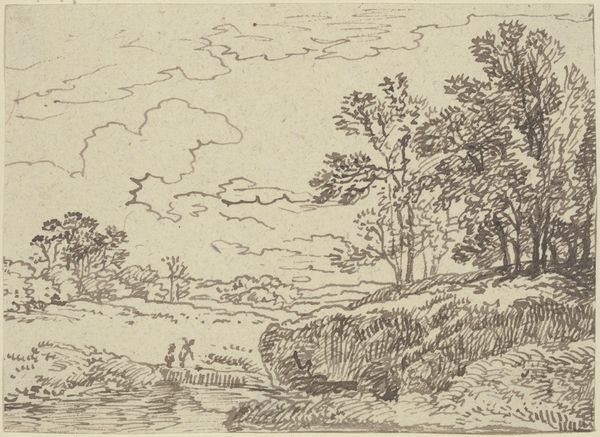
drawing, paper, dry-media, ink, pencil
#
drawing
#
landscape
#
etching
#
paper
#
dry-media
#
ink
#
romanticism
#
pencil
Copyright: Public Domain
Curator: Looking at this delicate rendering, we have "Landschaft mit Bäumen und Vieh" which translates to "Landscape with Trees and Cattle," an ink, pencil and etching on paper, held in the Städel Museum’s collection, crafted by Franz Kobell. It exudes such quietude. Editor: My eye immediately picks up a subtle melancholy in the graphite washes. I’m intrigued by the labor that produced the layered tones through dry media: it seems intensely repetitive, meditative even. Curator: Absolutely, it aligns with the Romantic movement’s embrace of nature as a space for contemplation, but even deeper, the landscape evokes archetypal ideas. Notice how the dense forest on the left mirrors the undefined, atmospheric forms of clouds on the right; that creates a symmetry indicative of higher symbolic meaning, or the sublime in the landscape. Editor: But the materiality speaks just as clearly. Consider the economic conditions surrounding paper production at the time and the cultural implications of its use as a "lesser" medium compared to painting. Was paper used in landscape studies deemed less valuable and less prestigious, or valued differently? Curator: Yes, that is something to reflect on further, but paper allowed for incredible immediacy and the freedom of exploring scenes *en plein air*, it facilitated emotionality, the sense of immediacy we so closely associate with Romanticism, and that is an inherent value of the piece here. The cattle, minute and far away, evoke a connection with an idyllic rural past that haunts much Romantic art. Editor: I appreciate your connection between materiality, place, and the Romantic ideal of the "picturesque," but to understand Kobell’s intention fully, it would be illuminating to research archival records related to local paper mills and artistic communities surrounding the time this was created. Curator: A fruitful area to expand upon, without a doubt! Overall, the drawing acts as an elegy for the pre-industrial landscape. Editor: Ultimately, understanding the economic and environmental factors during its making deepens our comprehension of Kobell’s intent, making visible his connection to both process and place.
Comments
No comments
Be the first to comment and join the conversation on the ultimate creative platform.

